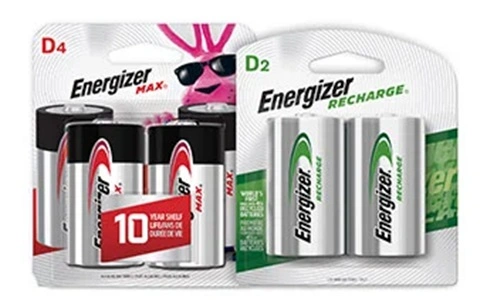Increasingly aggressive digital interaction leveling user standards means that cultivating a dynamic, highly interactive UI is essential for onboarding and retention. Thus, the solution to creating a dynamic, engaging, interactive UI is a Headless CMS. They provide separation of connection, which renders the flexibility to create and implement any engagement-centric experience in development and design.
Increased Interactivity through Flexible Delivery

Since a headless CMS delivers content via APIs and developers can build any custom interactive frontend, interactivity is inherently part of a headless experience. Where traditional systems rely on rigid frontend templates, headless solutions are independent of them and can be connected to modern frontend frameworks instead, such as React, Angular, and Vue.js. Headless CMS for modern websites enables this flexibility, allowing developers to design user experiences tailored to specific platforms and audiences. Developers have fewer boundaries when creating the content for a headless solution, meaning more fluid integration opportunities exist across use cases, devices, and points of interaction.
Easier Integration with Frontend Solutions
The most significant benefit of a headless CMS is easier integration with frontend solutions. The headless CMS delivers the content in structured universes via an API endpoint, meaning developers can integrate dynamic UI elements without issue. For example, a headless CMS can more easily integrate other apps’ interactive forms, chat widgets, live feeds, and personalized suggestions than a rigid system. The APIs allow for the simple execution of what would otherwise take complicated UI interactions; therefore, pages load faster, animations are cohesive and purposeful, and users are much more engaged.
Enhanced Personalization Fuels Engagement
Interactive UIs are far better when they can be personalized and a headless CMS allows for such personalization. Since headless solutions do not come with their own frontend layer, changes can happen in real time and not disrupt any current systems. A business can collect insights or visitor feedback and change what’s being shown to users in real time on the spot. Using trends or insights based on engagement, a headless solution can help present what people want as soon as it’s available while allowing the business to take advantage of contextual relevance almost immediately. Increased engagement happens when real-time personalization can occur across every digital touchpoint.
Instantaneous Content Change for Interactive UIs
Interactivity exists through engagement and the necessity to change content instantly. Because an out-of-the-box headless CMS supports instant content change, this relates directly to keeping ever-dynamic UIs fresh and relevant. For example, a livestream requires details to be updated instantly. Items in a digital marketplace are available or not based on inventory that changes in a split second. User-generated content exists through posting activities that are commented upon and engaged with and instead requires real-time feedback to inform users and keep them engaged and responsive to ever-changing UIs.
Greater Scalability for Interactive Offerings
Interactive UIs require the infrastructure to support more interaction and depth and more extensive needs for demand for content. A Headless CMS automatically scales without additional development needs if demand for real-time content occurs or traffic spikes. Therefore, businesses can feel safe scaling their interactive offerings in conjunction with a Headless CMS without needing considerable development on their end or interruptions in performance, allowing everything to run smoothly regardless of how active an interface is at that moment.
Unified User Experience Across All Channels and Devices
Consumers expect to see similar content across myriad devices and channels, from websites and mobile apps to in-store kiosks and social media platforms. A Headless CMS allows for the deep, unified integrity required for widespread utilization for interactive UIs. Since the Headless CMS operates through an API for content delivery, everything is kept together in its interactivity no matter what channel or device uses it. Therefore, user satisfaction increases while brand representation remains consistent across channels.
Increased Development and Faster Time to Market
Headless CMS solutions enhance development efficiency for interactive UIs by giving developers access to the organized content needed to create components in a short period. When everything they need is quickly at their fingertips, developers can focus on UX/UI elements that facilitate interactivity and make it appealing. Development times decrease, and time-to-market is reduced by the ability to iterate in the first place with rapid deployment options. When a company can get its ideas to market rapidly, it can shift based on market trends and user feedback and capitalize on openings before they close. Each version can go live in a few days or weeks instead of months or years.
Better Collaboration Among Teams
Interactive UIs require better collaboration between content teams, UX elements teams, and developers. Many others may also be involved, but with a headless CMS solution, collaborative efforts improve since team members operate in silos; they do not have to concern themselves with what other teams do in the end with the content or developed components. For instance, a developer can hone in on what they’re doing while the content teams make sure they provide their content in the right structure for the final interactive need. This reduces chaotic collaboration, especially with many people involved. Each team’s process is known and can be accomplished without distraction.
Enhanced Monitoring for UI Enhancements
One of the best benefits of having an interactive experience is the information it provides. Organizations can monitor how well a user engages with its custom UI after going live and apply real-time changes to ensure the enhanced experiences are based on engagement. Headless CMS options frequently integrate easily with other analytical measures. Therefore, companies can see how well UIs perform and how users navigate their options from the inside, giving them accurate insights about what works and what doesn’t. This makes analytics empower improvements.
Improved Performance and User Interaction
Nothing fosters user loyalty like performance especially on a platform that users are continually accessing and interacting with. A Headless CMS increases performance for content delivery through APIs that create segmented, lighter-weight transfers of information. Increased load speeds, scaling, and buffering visuals that work as quickly as access gestures provide major user interaction advantages that not only quell frustration but also keep users on the page or application for more extended periods. When an interactive UI performs well, users have a better impression, increased retention and usage rates, and improved loyalty to a brand.
Interactive UIs With Security and Stability
Creating interactive UIs means working with specific security and stability considerations especially when gathering personal data from users or transacting funds on behalf of your company. Headless CMS technology holds several security features, encrypted APIs, role-based access controls, secure authentication of tokens and requests that set a stable, enforced security requirement for both content and interaction. When interactive experiences are stable and secure, users can rely upon them, safeguarding a company’s reputation while also ensuring compliance with regulations.
Interactive UIs That Are Ready for Tomorrow’s Tech
Digital experiences are always changing with innovations in technology and fluctuating user needs. A Headless CMS ensures that interactive UIs are ready for tomorrow’s tech by making it easy for companies to integrate new technology down the line augmented reality (AR), virtual reality (VR), artificial intelligence (AI), voice-interactive technology, and more. Businesses can easily modify their offerings to expand interactive features, keeping products relevant, competitive, and capable of meeting evolving user needs over time.
Support for Rich Media and Multimedia Integrations
Headless CMS platforms facilitate the integration of rich media and multimedia into seamlessly interactive user interfaces. Since content is formatted and pushed through an API, organizations can add videos, audio, animations, interactive graphics, and more and even multimedia installations. Such integrations enhance user interactivity, and if one engages with the content effectively through various means, they’ll remember the experience better and for longer therefore fostering a deeper connection between the audience and the concept.
Consistent Branding for Interactive Experiences
Branded experiences require consistent branding in an interactive user interface as much as they would anywhere else with the brand. However, organizations become disjointed across different platforms accessing different content in different forms. A headless CMS allows access to branding logos, colors, typography, and spacing as all elements are cloud-based accessible. When UI interactivity is parallel to where the brand typically exists (via brand guides), trust is established, and audiences have cohesive interactions that help foster loyalty over time.
Easier Maintenance and Less Technical Overhead
Great technical complexity exists when trying to create and sustain interactive user interfaces across many platforms. With a headless CMS, much of the content management can be hidden, for API access allows for structured access over time. This means less reliance on consistency for content already stored in the headless CMS across channels, less upkeep needed across channels should updates be required, and reduced costs for technical debt down the line. This ease allows organizations to focus on user experiences instead of upkeep while adopting new interactivity features.
Supporting Omnichannel Interactive Experiences
More than ever, modern buyers desire seamless interactive experiences regardless of digital boundaries in various locations. A headless CMS inherently supports an omnichannel strategy since it fosters the same interactivity, customized experience, and unified content delivery across websites, mobile apps, IoT and connected devices, digital kiosks, and social platforms. When companies implement a uniform experience across the board, they offer frictionless interactive opportunities that not only improve the overall experience but also encourage longer periods of sustained interactivity.
Conclusion
Headless CMS platforms play a vital role in establishing rich, interactive user interfaces by providing a sound structure for dynamic content creation and delivery while also enabling quick implementation for registries and similar collections. Where monolithic CMS types force a strict templated design to be implemented, headless CMS splits the backend content generation and management from the frontend presentation layer. Thus, developers and designers can work in tandem without concern for limited prospects based on one CMS solution architecture. They each tackle their strengths for the best collaborative advantage.
In addition, businesses using headless CMS solutions enjoy better scalability. With all content held in a centralized repository with API distribution, solutions for user interfaces requiring interactivity can merely scale and need to scale as more user engagement necessitates, more elaborate and in-depth content becomes necessary, or additional digitization channels arise. For businesses wanting to extend reach via mobile access, voice applications, or even augmented/reality channels, headless CMS plays an important role in ensuring the correct API distribution without failing on content integrity and performance.
Further, the opportunity to customize content is exponentially more accessible than ever in a headless CMS environment compared to a monolithic coupling. When content management is goal-oriented via an API-driven approach, real-time awareness of user activity, user needs, browsing tendencies and situational awareness can encourage customized interactions at any time. Ultimately, this not only engages customers to a higher degree as they feel emotionally invested in interpersonal opportunities that arise but also fosters better conversion rates; if people see something customized to their needs, they’re more likely to care if it aligns with their preferences.
With headless CMS technology, registries also benefit from responsiveness and the ability to update content in real-time. Should shifts in markets, market data, or particular influences from competitors occur, businesses can instantly update interactive information across all boards simultaneously to retain cohesion and direction. Customers always see what’s currently available, decreasing frustration when multiple portals have the same accurate information.
Positioning a business within today’s increasingly interactive digital world is beneficial when implementing headless CMS technology. It places companies in the right place for flexibility, adaptability, invention and competitive advantage over lulled peers in the industry; those who utilize headless architecture can better foster cohesive engagement opportunities with customization for user longevity satisfaction and customer loyalty and expansion across all potential microsystems.



